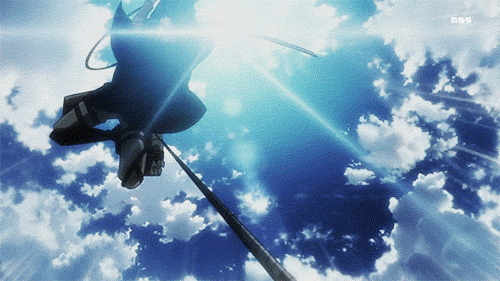“Attack on Titan”, also known as “Shingeki no Kyojin,” is a dark and intense anime/manga series created by Isayama Hajime. It primarily focuses on humanity’s struggle for survival against giant humanoid creatures known as Titans. Although the series predominantly concentrates on its characters’ emotional and psychological aspects, the physics principle behind creating the civil and mechanical structures can be seen in detail. This article will look into a few aspects of Attack on Titan (AOT) from the physics perspective, and some improvements are also suggested to defend the cities and humanity better.
Mass and Acceleration:
The Titans’ colossal size and weight contribute to their destructive power. Large mass also means large force produced or required! The series often demonstrates how a Titan’s massive mass slows its movements and agility and the damage it can inflict on structures and humans. The connection between mass and acceleration is crucial when Titans are portrayed moving or attacking.
Gravity and Free Fall:

Titans, being massive creatures, experience significant gravitational forces. Gravity and free fall are evident when Titans move, jump, or fall from great heights. The Titans are normally slow in motion because of their weight, requiring stronger muscles for faster movement. Furthermore, the characters must also consider gravitational effect when using their vertical maneuvering gear during aerial battles and while escaping from dangerous situations.
In battles between the Survey Corps and Titans, soldiers often use a unique grappling and flying device called the “Vertical Maneuvering Equipment” (or 3D Maneuver Gear) to navigate and attack. The maneuvering gear has to be worn near the waist as that is the centre of gravity of the human being, which is about 60-70% above the feet. This way, the device supports the whole body. Of course, the characters must go through training to use the maneuvering gear as the support at the waist also makes it a pivot point during the swing.
Projectile Motion and Trajectory:

In various encounters, characters use artillery and other long-range weapons to attack Titans from a distance. The trajectory of these projectiles follows the laws of projectile motion. Factors like launch angle, initial velocity, and the effect of wind resistance have to be taken into account for effective hit on the Titans. With a lower launch angle and larger initial velocity, a faster attack can be initiated on the Titan at a longer range. These parameters are essential for success in these battles.
Kinetic Energy and Momentum:

By shooting out grappling hooks and using gas-powered jets from the manoeuvring gear, they gain momentum and kinetic energy to swing and fly around. With more energy gain during the swing, a larger momentum change can be expected, and a stronger force can be created for the attack. The physics of momentum, conservation of energy, and centripetal force are vital factors influencing their movements and attack.
Structural Integrity and Pressure:

The massive walls, Maria, Rose, and Sina, that protect humanity from the Titans play a significant role in the series. The Walls are incredibly tall and thick, and they endure immense pressure from the attack of the Titans. With careful calculation, the walls can be built thicker towards the bottom to create a larger base and form an inner L shape. This is to support the huge weight of the wall and it creates better stability to withstand the attack from the outside. The concept of structural integrity and how these enormous walls withstand the forces acting on them relates to real-world principles of engineering and physics.
Material Physics

For the weapon design, ultra-hard steel is used rather than stainless steel to make the blade because steel is a harder composite material than stainless steel. The ultra-hard steel allows the blade to withstand high impact during the attack. With harder steel, the sharpness of the blade can also last longer in battle. The material used to build the wall has to be solid and able to withstand the seasonal change in the story.
While “Attack on Titan” primarily focuses on its engaging narrative, emotional depth, and character development, the series incorporates some physics elements to enhance the realism of its action sequences and world-building. The depiction of structural integrity, the physics of motion and combat, and the concept of gravity within the world of Titans and humans create a compelling and immersive experience for viewers. The incorporation of elements of physics into AOT can further heighten its realism and elevate the artworks, allowing the audience to be more emotionally invested into the story.
Note: Dr Tan Kwee Yong is an experienced lecturer at AUSMAT, Sunway College, KL. He is also a material scientist, registered graduate technologist and a member of technical committee for a US-based certification company. With an interest in advancing science policy and education, he is also involved in several NGOs and reviews different academic courses.





